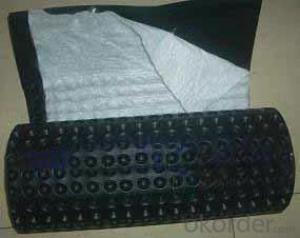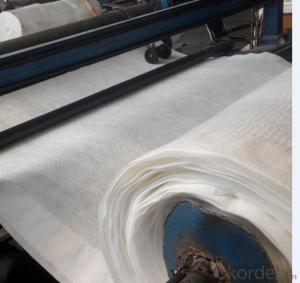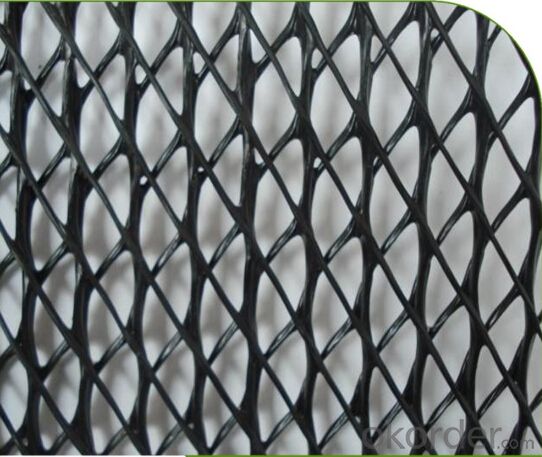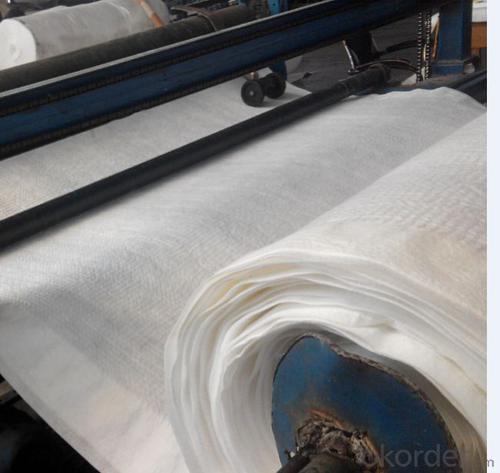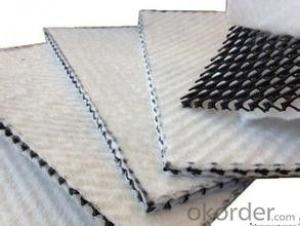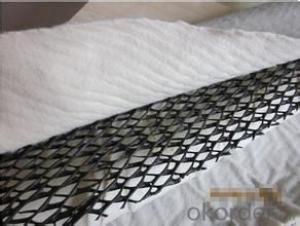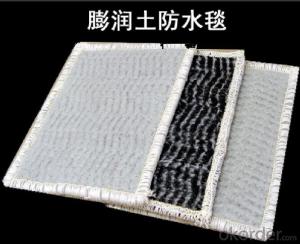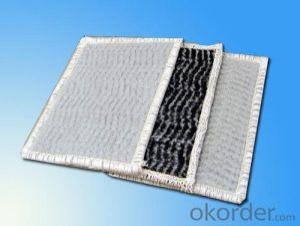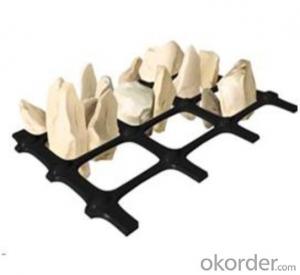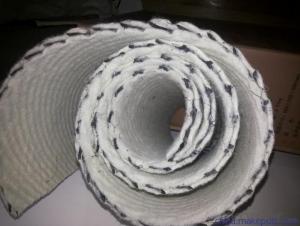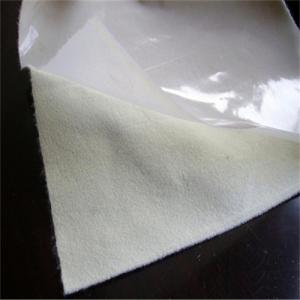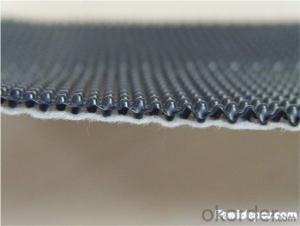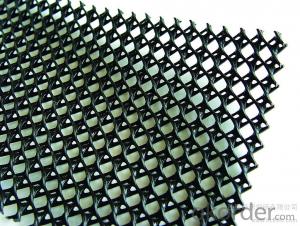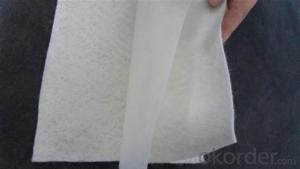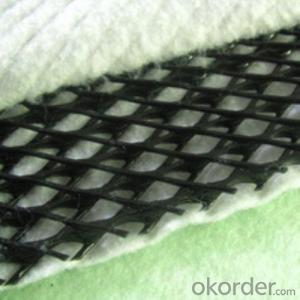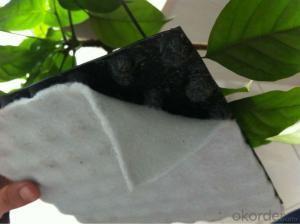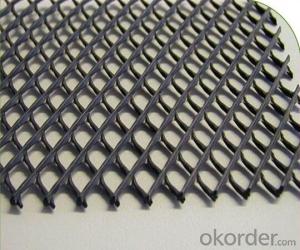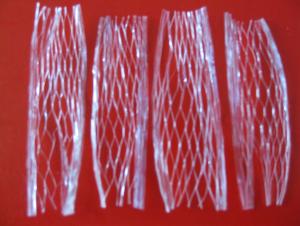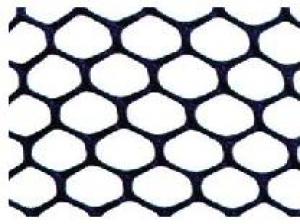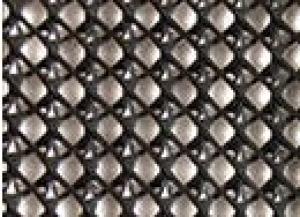Geotextile Compounded to Dimple Waterproof Drainage Board Geocomposite
- Loading Port:
- Qingdao
- Payment Terms:
- TT OR LC
- Min Order Qty:
- 2000 m²
- Supply Capability:
- 200000 m²/month
OKorder Service Pledge
OKorder Financial Service
You Might Also Like
Dimple waterproof drainage mat board
1. 8mm 12mm 16mm and 20mm height
2. drainage water and waterproofing
3. ISO CE
Drainage Board Introduction
Composite drainage board is a dimple geomembrane,which produced by extruding plastic sheet into dimple shape.These dimples, in spatial structure with certain height ,can resist long-term high pressure without deformation.On the top of the dimples,there is filtration geotextile to make sure the drainage channel runing well without any block for any articles,for example,filling particles or concrete.
Drainage board Typical application:
Landscape engineering:garage top greening,roof garden,football field,golf course,beach project.
Municipal engineering:road base,subway,tunnel,landfill.
Construction engineering :upper or bottom layer of building foundation,basement wall,bedding filtration and heat insulation.
Traffic engineering:highway,railway basement,dam and slope.
Drainage board Typical Features:
1)Excellent drainage function, can bear long time hige press load
2)High tensile and shear strength
3Reduce the rate geotextile embedding into the core of geonet, can protect long time stable water conductivity
4)Tri-dimension composite geonet for drainage can bear more than 2000kpa compression load
5)Its anti-compression capacity is much larger than common geonet for drainage
6) Certificate :ISO14001:2004, ISO9001:2008
Specifications and technical parameters:
Drainage network core | units | Specification | ||||
Unit weight | g/m2 | 750 | 1000 | 1300 | 1600 | |
Thickness | Mm | 5.0 | 6.0 | 7.0 | 7.6 | |
Hydraulic conductivity | m/s | kx10-4 | Kx10-4 | Kx10-4 | Kx10-4 | |
Elongation | % | 50 | 50 | 50 | 50 | |
Tensile strength (core netwaork) | kN/m | 8 | 10 | 12 | 14 | |
Geotextile | g/m2 | Heavier grades of geotextiles can be bonded to geonet on request | ||||
Usages:
In the railway, highway and other transportation infrastructure, drainage system safety and the service life
of the project and its have inseparable relationship, in which the geotextile material is an important part
of drainage system, the drainage effect of 3D composite drainage net is particularly notable. mainly
used for tunnels, municipal engineering, reservoir, revetment in drainage engineering.
FAQ
1. Which payment do you accept?
For you convinience,our payment can be L/C,TT
2. Is free sample available?
We can supply free samples if you need.
3. How about your quality?
We have strict quality control system, we make testing on incoming raw material and finished products. Your third party testing is also welcomed. With high quality, our products are used on government projects at home and abroad. Our product quality is accepted by clients from all over the world
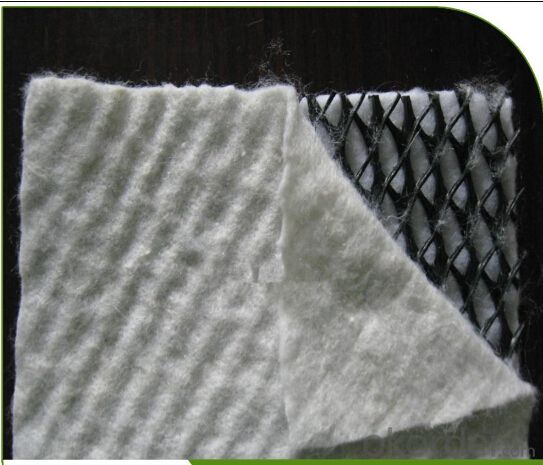
- Q: Are geosynthetics resistant to chemical degradation?
- Yes, geosynthetics are generally resistant to chemical degradation. They are designed to withstand exposure to various chemicals and have been tested to ensure their resistance to degradation over time. However, the specific level of resistance can vary depending on the type of geosynthetic material and the specific chemicals involved.
- Q: Are earthwork products suitable for use in riverbank stabilization projects?
- Yes, earthwork products, such as geotextiles, geogrids, and erosion control blankets, are often used in riverbank stabilization projects. These products provide effective erosion control and help prevent soil loss along riverbanks, thereby contributing to the stability and longevity of the riverbanks.
- Q: How can geosynthetic panels be used in bridge abutments?
- Geosynthetic panels can be used in bridge abutments to provide reinforcement and stability. These panels are typically made of high-strength materials like geotextiles or geogrids, which can be layered and attached to the abutment walls. By adding geosynthetic panels, the abutment gains increased load-bearing capacity and improved resistance to lateral forces. Additionally, these panels can help with soil erosion control and provide a barrier against potential water infiltration. Overall, geosynthetic panels offer a cost-effective and efficient solution for enhancing the performance and lifespan of bridge abutments.
- Q: Are there any specific earthwork products available for railway projects?
- Yes, there are specific earthwork products available for railway projects. These include materials such as ballast, sub-ballast, and subgrade that are used to provide stability and support for the railway tracks. Additionally, geosynthetic products like geotextiles and geogrids are commonly used to enhance the performance and longevity of railway earthworks.
- Q: How do earthwork products contribute to dust control on construction sites?
- Earthwork products, such as geotextiles and erosion control blankets, play a crucial role in dust control on construction sites. These products are designed to stabilize the soil, prevent erosion, and control sedimentation. By providing a physical barrier, they help to reduce the amount of loose soil particles that can become airborne and contribute to dust pollution. Additionally, these products help retain moisture in the soil, preventing it from drying out and generating dust. Overall, earthwork products effectively minimize dust emissions, ensuring a safer and healthier environment for workers and nearby communities.
- Q: What are the different types of erosion control products for earthwork?
- There are several types of erosion control products for earthwork, including erosion control blankets, sediment control fences, silt fences, straw wattles, erosion control mats, and geotextiles. These products are designed to prevent soil erosion, promote vegetation growth, and control sediment runoff during construction or landscaping projects.
- Q: What are the different edge profiles available in earthwork products?
- Some different edge profiles available in earthwork products include straight edges, beveled edges, rounded edges, and chamfered edges.
- Q: What are the different applications of geotextile filter fabrics?
- Geotextile filter fabrics have various applications in civil engineering and construction projects. They are commonly used for erosion control, as they prevent soil erosion by filtering sediment and allowing water to pass through. These fabrics are also used in drainage systems, where they provide separation and filtration of different soil layers while allowing proper water flow. Geotextile filter fabrics are also utilized in road construction to improve soil stability and prevent the clogging of drainage systems. Additionally, they find applications in agriculture, landscaping, and shoreline protection projects.
- Q: What are the key considerations when using geotextile tubes for shoreline stabilization?
- There are several key considerations when using geotextile tubes for shoreline stabilization. Firstly, the location and site conditions need to be carefully assessed to determine the appropriate size and placement of the tubes. The type and quality of the geotextile material used in the tubes is also crucial, as it should be durable and resistant to UV degradation and erosion. Additionally, the design of the tube system should account for factors such as wave action, water level fluctuations, and potential storm events. Proper installation and maintenance are essential to ensure the effectiveness and longevity of the geotextile tube system for shoreline stabilization.
- Q: What are the advantages of using geosynthetic liners in agricultural applications?
- There are several advantages of using geosynthetic liners in agricultural applications. Firstly, these liners provide a barrier against the leakage of water, nutrients, and other chemicals, ensuring that they reach the desired areas and do not seep into the surrounding soil. Secondly, geosynthetic liners help in reducing soil erosion by providing stability to the ground and preventing the loss of valuable topsoil. Additionally, these liners can aid in controlling pests and weeds, as they act as a physical barrier to their movement and growth. Lastly, geosynthetic liners can enhance the overall efficiency and effectiveness of irrigation systems, as they minimize water loss through seepage and evaporation.
Send your message to us
Geotextile Compounded to Dimple Waterproof Drainage Board Geocomposite
- Loading Port:
- Qingdao
- Payment Terms:
- TT OR LC
- Min Order Qty:
- 2000 m²
- Supply Capability:
- 200000 m²/month
OKorder Service Pledge
OKorder Financial Service
Similar products
Hot products
Hot Searches
Related keywords
